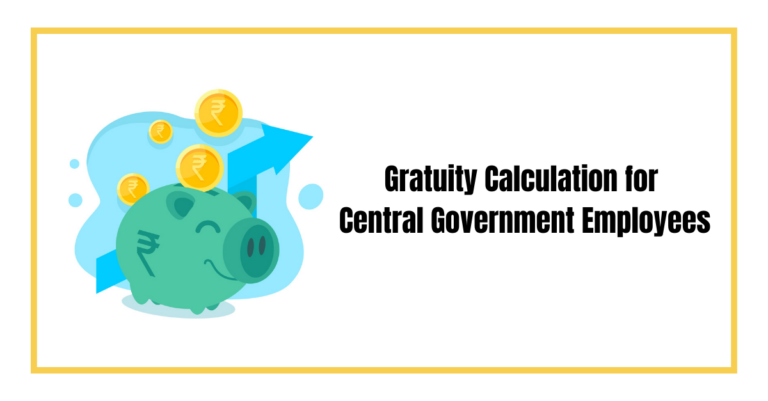Want to know everything about Form 16 how it is used in gratuity? Then you can find all the information here.
You’ll be hearing from the Income Tax Department quite a bit between now and April 15 to remind you to submit your tax returns on time. When preparing your ITR, Form 16 is one of the most frequently used financial documents. This article will take a quick look at Use of Form 16 in Gratuity and how it can simplify your tax return filing process.
Everything To Know About form 16 in Gratuity?
When an employer deducts income tax from an employee’s paycheck, they must fill out and submit Form 16 to the Income Tax Department. This certificate is issued by Section 203 of the Income Tax Deduction at Source Act (IT Department). Employer tax withholding amounts and submission dates to the Treasury are specified.
You can consider yourself lucky if you have worked for multiple employers during the year and taxes have been withheld. One Form 16 per individual is required. Form 16 might not be issued, however, if your employer(s) did not withhold any taxes from your pay because your yearly income was below the exemption limit.
Eligibility for Form 16
Form 16 is issued to any salaried worker with taxes withheld at the source. If your employer has withheld tax from your paycheck, whether or not your income is above the threshold for exemption, you are entitled to a Form 16.
In What Ways is Form 16 Important?
Income tax returns are simplified by using Form 16. There will be evidence that the employer has paid over the TDS funds it withheld from your paycheck to the appropriate authorities.
In addition, it shows how your tax was calculated using the information you provided about your investments at the start of the fiscal year. Include all relevant information, such as rent, medical expenses, loans, etc., that may affect your taxable income and any allowances your employer may have provided. You can use this information when preparing your tax returns.
What are Form 16A and Form 16B?
The data you need to complete your tax return can be found on Form 16. It’s primarily divided into two sections, Part A and Part B, that mirror the segmentation of your information. These are critical components of Form 16 for submitting tax returns. The parts of Form 16 are described in greater depth below.
Why do we need Form 16A?
The Employee and Employer information found in Part A of Form 16 includes the following:
- Person’s name who works here
- Employee mailing address
- The number assigned to each employee.
- The company’s name (tax deductor)
- Location of the company (tax deductor)
- Tax ID number of the company
- Location of the company
There’s information on the amount of tax withheld when that amount was deposited and the government-issued Challan.
To begin, please define Form 16B. Elements of a Form 16B:
Part B of Form 16 is a comprehensive statement that includes information about the employee’s salary, any other income they’ve reported to their employer, the total amount of taxes they’ve paid, and the total amount of taxes they owe. The sections of Form 16B are as follows:
An employee’s salary is broken down here, starting with the “Salary Received” section. A salary is broken down further into its constituent parts, such as the Leave Travel Allowance (LTA), the Leave Encashment, the House Rent Allowance (HRA), the Gratuity, and so on.
Allowances for Conveyance, HRA, and Children’s Education are tax-free for employees, thanks to Section 10 of the Income Tax Act (1961). Form 16B also includes medical, dental, and hospital bills.
For example, the salary deduction cap is Rs 1.5 lakh. Public Provident Fund, Pension Plans, Life Insurance Policies, Tax Saving Mutual Funds, and the Sukanya Samriddhi Scheme are some investment vehicles that qualify for tax benefits under Section 80C/80CCC/80CCD. Other sections’ deductions, such as 80D and 80E, are also included.
The term “gross income” refers to the total of an employee’s salary plus any additional income reported by the worker, such as rental or real estate profits. The employee must inform the employer of their other sources of income during the investment proof phase.
When determining taxable income, the gross income is subtracted by all deductions to arrive at the net taxable salary. This figure is used to determine an individual’s tax bill. These provisions cover the Education Cess and surcharges, the rebate in Section 87, and the relief provided in Section 89. Income tax payable, withheld, and any remaining tax owed or refund applicable are all detailed.
What’s the deal with Form 16, 16A, and 16B?
Certificates of tax withheld from wages come in a few different flavours, depending on who issued the document. Here, we’ll dissect the differences between Form 16 and its predecessor. Information on Form 16A and Form 16B:
Employers will issue you a Form 16 to verify that they have withheld the appropriate amount of tax from your salary after considering any investments you have declared and providing proof for, as well as any other deductions or exemptions you may be entitled to.
Financial institutions, entities, or people (could be your tenant) who have deducted tax at source on your income other than your salary will issue Form 16A in Gratuity, not your employer. Examples include rent, commissions from insurance companies, interest from savings and checking accounts, capital gains from the sale of investments like mutual funds, and more.
Income from the sale of real property is subject to withholding tax, and Form 16B must be filed to account for this. The purchaser issues this certification to the vendor. The buyer must report the TDS return amount to the Income Tax Department, which is currently set at 1% of the purchase price. Buyer’s Form 168 is proof that the tax has been paid to the government.
Conclusion – How to use Form 16 in Gratuity
Form 16 is required to file your income tax returns, which is one of the most vital tasks you must complete considered a crucial part of the tax filing process. Most of the data you need to file your Indian income tax returns can be found on Form 16. Form 16’s various sections help you simplify the steps in submitting your ITR. Because of this, it’s crucial that you fully grasp all of Form 16’s nuances. Vakilsearch professionals here can help easily provide information about how to use form 16 in gratuity.
Read Also;










